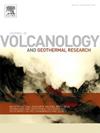智利南安第斯山脉Lonquimay火山全新世中晚期爆发:地层学、火山扩散和爆发前条件
IF 2.3
3区 地球科学
Q2 GEOSCIENCES, MULTIDISCIPLINARY
Journal of Volcanology and Geothermal Research
Pub Date : 2025-09-28
DOI:10.1016/j.jvolgeores.2025.108457
引用次数: 0
摘要
lonquimae - tolguaca火山群(LTVC)位于智利安第斯南火山区(南南角40°),在1988 - 1990年经历了最后一次喷发,深刻影响了邻近的农村社区。然而,从Lonquimay火山的全新世火山记录中,已经发现和描述了20多次爆发。了解它的喷发历史是Malalcahuello的居民主要关心的问题之一,Malalcahuello距离LTVC东南方向11公里。在这篇文章中,我们的目标是破译Lonquimay的行为,重点关注其最近(即全新世中晚期,5.5 ka)的爆炸历史,以更新的科学知识解决基于社区的问题。我们研究了LTVC东-东南方向近中(即2-15 km)的tephra序列。共有17个tephra单位。这些主要是由灰色到白色的浮石层和黑色到棕色的矿渣层有节奏的交替形成的。火山碎屑结构由火山渣、致密的幼年碎片和浮石组成,其成分从玄武岩到英安岩不等。对tephra矿床的研究表明,斯特龙堡期至次普林利期喷发类型,而基于等厚层的体积估计(从四个单独的矿床中得到107 m3左右)支持火山爆发指数(VEI)为3。这类事件在未来100年内发生的概率为27 - 61%。所研究的温金矿床是由基性岩浆(玄武岩和玄武岩安山岩,1050-1100℃)和硅质岩浆(安山岩和英安岩,890-940℃)组成的,储存在~ 2 ~ ~ 7.5 kbar之间。岩浆演化主要受部分结晶和偶有混合作用控制。在多个尺度上同时评估火山落沉积物,可以为火山喷发情景、岩浆过程和岩浆来源以及母火山系统的潜在危害提供线索。除了促进科学知识外,这些要素还可以通过将有关活火山作用的社区问题纳入危害研究,从而加强减少风险的战略。本文章由计算机程序翻译,如有差异,请以英文原文为准。
Middle–to–late Holocene explosive eruptions of Lonquimay volcano (Southern Andes of Chile): Stratigraphy, tephra dispersal, and pre-eruptive conditions
The Lonquimay-Tolguaca Volcanic Complex (LTVC), located in Chile's Andean Southern Volcanic Zone (40°S), experienced its last eruption in 1988–90, profoundly affecting neighbouring rural communities. Yet, more than twenty explosive eruptions have been recognised and described at Lonquimay volcano from its Holocene tephra records. Knowing its eruptive past is one of the main concerns of the residents of Malalcahuello, 11 km E-SE from the LTVC. In this contribution, we aim to decipher the behaviour of Lonquimay, focusing on its most recent (i.e., Middle-to-Late Holocene, <5.5 ka) explosive history to address community-based questions with renewed scientific knowledge. We studied proximal-to-medial (i.e., 2–15 km) tephra sequences east-southeast from the LTVC. Seventeen tephra units were described. These are mainly formed by rhythmic alternations of both grey to white pumice beds, and black to brown scoria beds. Pyroclast textures consisting of scoria, dense juvenile fragments and pumices display compositions ranging from basalts to dacites. The study of tephra deposits suggests Strombolian to Sub-Plinian eruptive styles, whereas isopach-based volume estimates on the order of 107 m3 from four individual deposits support a Volcanic Explosivity Index (VEI) of 3. This type of events has a 27–61 % probability of occurrence within the next 100 years. The studied tephra deposits were fed by mafic (basaltic and basaltic andesitic, 1050–1100 °C) and silicic (andesites and dacites, 890–940 °C) magma batches stored between ∼2 to ∼7.5 kbar. Magma evolution was mostly controlled by fractional crystallisation and occasional mixing events. Assessing tephra fall deposits simultaneously at multiple scales offers clues on the eruptive scenarios, magma processes and sources, as well as potential hazards of their parent volcanic systems. Along with contributing to scientific knowledge, these elements can enhance risk reduction strategies by integrating community questions about active volcanism into hazard research.
求助全文
通过发布文献求助,成功后即可免费获取论文全文。
去求助
来源期刊
CiteScore
5.90
自引率
13.80%
发文量
183
审稿时长
19.7 weeks
期刊介绍:
An international research journal with focus on volcanic and geothermal processes and their impact on the environment and society.
Submission of papers covering the following aspects of volcanology and geothermal research are encouraged:
(1) Geological aspects of volcanic systems: volcano stratigraphy, structure and tectonic influence; eruptive history; evolution of volcanic landforms; eruption style and progress; dispersal patterns of lava and ash; analysis of real-time eruption observations.
(2) Geochemical and petrological aspects of volcanic rocks: magma genesis and evolution; crystallization; volatile compositions, solubility, and degassing; volcanic petrography and textural analysis.
(3) Hydrology, geochemistry and measurement of volcanic and hydrothermal fluids: volcanic gas emissions; fumaroles and springs; crater lakes; hydrothermal mineralization.
(4) Geophysical aspects of volcanic systems: physical properties of volcanic rocks and magmas; heat flow studies; volcano seismology, geodesy and remote sensing.
(5) Computational modeling and experimental simulation of magmatic and hydrothermal processes: eruption dynamics; magma transport and storage; plume dynamics and ash dispersal; lava flow dynamics; hydrothermal fluid flow; thermodynamics of aqueous fluids and melts.
(6) Volcano hazard and risk research: hazard zonation methodology, development of forecasting tools; assessment techniques for vulnerability and impact.

 求助内容:
求助内容: 应助结果提醒方式:
应助结果提醒方式:


